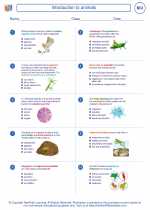Nebulae: Exploring the Cosmic Clouds
Nebulae are vast clouds of dust and gas in space. They are often considered as the birthplaces of stars and planets, as the gravitational forces within these clouds can cause the material to clump together and eventually form new celestial bodies.
Types of Nebulae
There are several types of nebulae, including:
- HII regions: These are areas of ionized gas, often associated with young, hot stars.
- Reflection nebulae: These are clouds of dust that reflect the light of nearby stars.
- Dark nebulae: These are dense clouds of gas and dust that obscure the light from objects behind them.
- Planetary nebulae: These are shells of gas ejected from aging stars.
- Supernova remnants: These are the remnants of massive stars that have exploded.
Formation and Evolution
Nebulae can form from the remnants of dying stars, as well as from the gas and dust present in the interstellar medium. Over time, the gravitational forces within a nebula can cause the material to collapse and form new stars and planetary systems.
Observing Nebulae
Nebulae can be observed using telescopes that are sensitive to the specific wavelengths of light emitted or reflected by the gas and dust within them. These observations can provide valuable insights into the processes of star formation and the chemical composition of the universe.
Study Guide
When studying nebulae, it's important to focus on the following key points:
- The different types of nebulae and their distinguishing characteristics.
- The processes involved in the formation and evolution of nebulae.
- The observational techniques and instruments used to study nebulae.
- The significance of nebulae in the context of stellar and planetary formation.
Additionally, it's helpful to review specific examples of well-known nebulae, such as the Orion Nebula or the Crab Nebula, and understand their unique features and contributions to our understanding of the cosmos.
.◂Biology Worksheets and Study Guides High School. Introduction to animals

 Worksheet/Answer key
Worksheet/Answer key
 Worksheet/Answer key
Worksheet/Answer key
 Worksheet/Answer key
Worksheet/Answer key
 Vocabulary/Answer key
Vocabulary/Answer key
 Vocabulary/Answer key
Vocabulary/Answer key
 Vocabulary/Answer key
Vocabulary/Answer key
